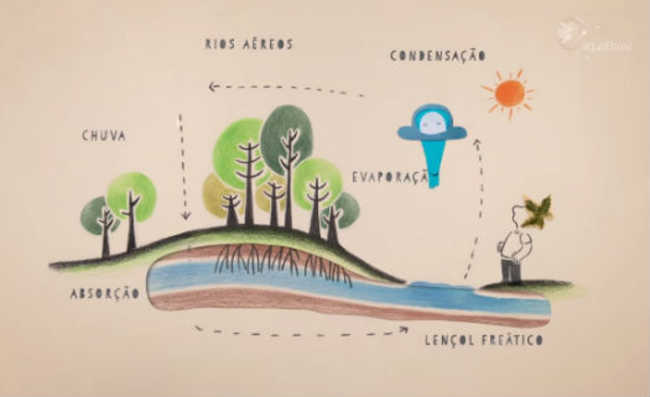Plastic decomposition time is uncertain and worrisome
According to data from the Ministry of the Environment, plastic takes over 400 years to decompose, but it is necessary to expand information on the subject

tanvi sharma image in Unsplash
The term “decomposition time” refers to the time it takes for products to decompose and disappear from the medium, varying according to the nature of the material. In addition to the long period of decomposition, many materials cause damage to the environment and the health of humans and animals if disposed of incorrectly, as is the case with plastic.
Much of the plastic packaging we consume can be recycled, re-entering the production chain and ridding the environment of a pile of waste whose decomposition will take thousands of years. Recycling this material helps to reduce the waste produced and ensures better use of the planet's natural resources, but it is still low and not all types of plastic are recyclable.
Plastic decomposition time
One of the focuses of study in Chemistry is the establishment of relationships between the constitution and properties of materials, their use in products and the impacts associated with the processes of transformation and circulation in the environment. When working with the relationship between materials that make up products and the environmental impact caused by their disposal, it is very common to come across tables that present a list of materials and the time required for the decomposition of each one in nature.
According to data from the Ministry of the Environment, plastic waste takes over 400 years to decompose. However, there is no concrete information regarding the decomposition time of each type of plastic. Therefore, there are studies that estimate the decomposition time of different plastic materials, such as:
- Plastic bag: 20 years;
- Plastic foam cup: 50 years;
- Straw: 200 years;
- Plastic bottle: 450 years;
- Disposable diaper: 450 years;
- Fishing line: 600 years.
The main reason plastic decomposition time is so long is that nature does not yet know how to get rid of it. Bacteria and fungi that decompose the materials have not had time to develop enzymes to degrade the substance, says chemical engineer Marilda Keico Taciro, from the Technological Research Institute (IPT). Each of the molecules in a plastic item has hundreds of thousands of atoms, mostly carbon and hydrogen. Because the bonds between atoms are so stable, decomposers cannot break the material into smaller pieces to destroy it.
Impacts of plastic on the environment
The enormous amounts of plastic produced in the world, the population's dependence on this material, its high decomposition time and the inability to deal sufficiently and ecologically with these materials have alarmed international organizations, NGOs, activists, members of civil society and governments .
Plastics can disrupt the life of marine animals in different ways, either by intertwining with objects or by ingesting these materials. Or even by the interaction with the plastic itself, which collides with marine species, causing abrasions or obstructing the passage.
In the case of microplastics, the biggest problem is in the ingestion by marine organisms. As there are still few studies on this topic, there is talk of “potential effects”, which can range from the cellular level to entire ecosystems. Some studies have found evidence that the ingestion of microplastics can affect hunting and prey capture, as the material can be mistaken for food, occupy space in the animal's digestive system and lead to a reduction in hunger signals. In this way, the animal may have a loss of energy, have inhibited growth and suffer impacts on fertility, in addition to the possibility of death.
In addition to polluting and contaminating the soil, when disposed of incorrectly, plastic waste can clog ditches and manholes, which aggravate floods and make people homeless, especially in peripheral regions. Visual pollution is also another harm caused by plastic waste.
Lack of information on plastic decomposition time
Plastic pollution is currently one of the most visible and complex environmental issues. Interested and concerned parties include researchers, government agencies, non-governmental organizations, industry, media and the general public. One of the main assumptions behind the issue and the public outcry is that plastics last indefinitely in the environment, resulting in chronic exposure that harms animals and humans. But the data to support this assumption are sparse.
An accurate understanding of the persistence of plastic products in the environment is critical to better understanding the issue. Consumers need reliable information on plastic decomposition time to make informed choices. Researchers need this information because persistence is a key factor in models that predict how much plastic waste is in the environment and where it resides, as well as the risks associated with that pollution. Policymakers need this information to develop evidence-based policies that prohibit the use of plastics at the local, national and international levels.
Scientists Collin Ward and Christopher Reddy analyzed 57 different infographics published by government agencies, non-profit organizations, academic institutions and other groups from 13 countries and in four languages. "When we looked and checked each of these values related to how long a piece of plastic takes to decompose in the environment, we couldn't find an acceptable or credible source that would support these graphs," says Reddy.
The scientists began the investigation as a result of their own laboratory work - Ward and Reddy are chemists who study the time at which plastic decomposes in the environment. It's an important issue, says Reddy, because emerging evidence indicates that different types of plastic can decompose much faster or slower under different environmental conditions — if they're exposed to sunlight or darkness, for example, or exposed to certain types of plastic. bacteria.
The lack of data intrigued scientists, so they did a literature search, enlisted the help of a research librarian, and sought out program directors at the National Oceanic and Atmospheric Administration (NOAA) to track the science behind the numbers. They didn't find any reliable data.
Law and Reddy emphasize that lack of data is not a license to pollute, as scientists have found decades-old plastic in the ocean, so it's known that it can last a long time. Humans dump 4.8 to 12.7 million metric tons of plastic into the ocean each year, and scientists have raised concerns about the health effects of microplastics in the sea and the air.
Alternatives to plastic
The correct disposal of waste is essential so that recyclable materials do not remain in the environment causing damage to species. Therefore, it is essential to be ecologically aware and rethink our consumption habits. The decomposition time of each material should influence our purchasing decisions and the destination we give to the products.
The 3R's Principle - reduce, reuse and recycle presents itself as a viable solution to problems related to waste. It is a proposal on consumption habits, popularized by the environmentalist organization Greenpeace, which aims to develop more sustainable actions. In addition, biodegradable packaging has been identified as another way out of the environmental impacts caused by garbage, as they can decompose in weeks or months.
It is noteworthy that the impacts caused by plastic to health and the environment are scientifically proven. This means that, regardless of the lack of data regarding the plastic decomposition time, it is important that there is a decrease in the consumption of products made of this material.










